Learn how to assess the sneaker market for the most profitable opportunities, how to source and sell these shoes, and how you can go from a side hustle to a full-time business.
Key takeaways
- Sneaker reselling generates billions in revenue annually and offers consistent profitable opportunities.
- You can start reselling sneakers with as little as $10 from thrift stores.
- Hot new releases typically require a $200 budget for initial investment.
- Sneaker bots automate checkout processes and significantly improve purchase success rates.
- Professional packaging and prompt shipping create lasting impressions on premium buyers.
With billions of dollars in revenue annually from independent sellers worldwide, sneaker reselling is a thriving market. If you want to learn how to get started with sneaker reselling the right way, you’re in the right place.
In this guide, we’ll uncover a step-by-step process to lay the groundwork for a sneaker reselling business, including how to scale it down the track. You’ll learn how to assess the market for the most profitable opportunities, how to source and sell these shoes, and how you can go from a side hustle to a full-time business.
Let's begin by answering some burning questions before diving into how you can start reselling sneakers.
Is sneaker reselling profitable?
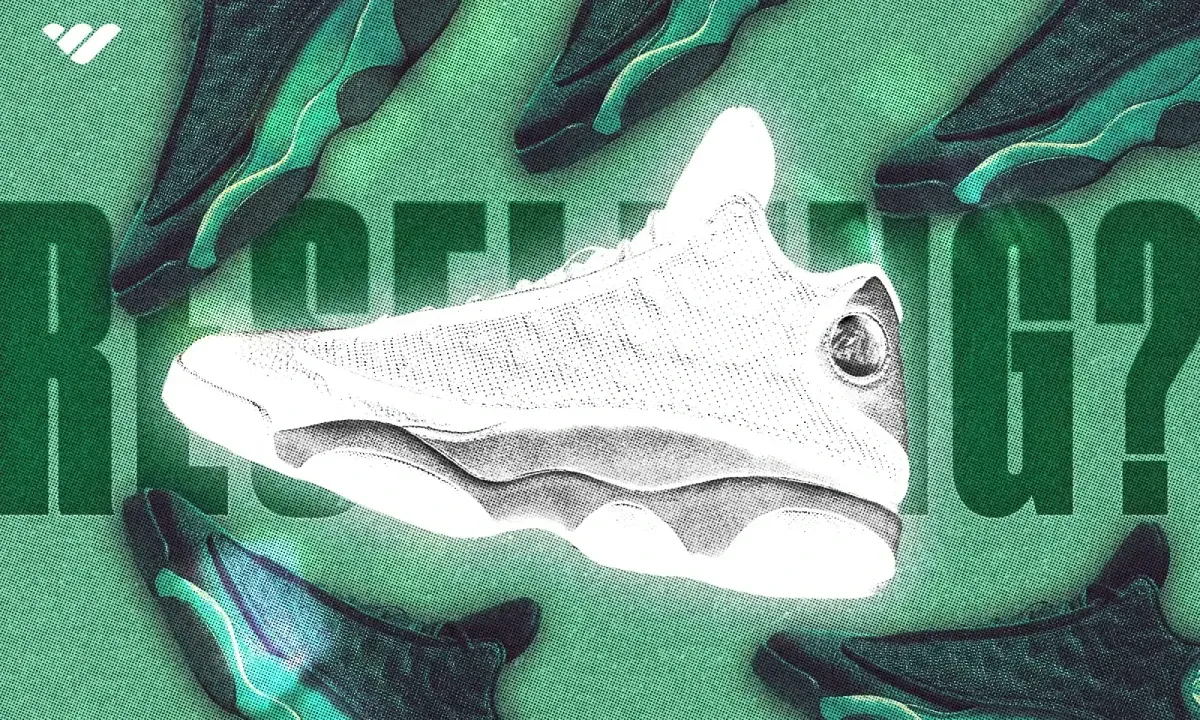
In short, yes! Sneaker reselling offers consistent demand, a hungry and loyal audience, and constant opportunities. Turns out, flipping shoes has the potential to be highly profitable. There are countless stories of individuals who have started six-figure shoe businesses from scratch, and many of these sellers are young, first-time entrepreneurs.
While it’s possible to achieve significant financial success reselling shoes, doing so requires a consistent approach to sourcing and selling shoes, which you can scale over time.
And, while many shoe resellers start off as a side hustle, profiting a few hundred dollars here and there, the opportunity is there to make even more. Your income potential in the sneaker market will be proportional to the knowledge you have, the commitment level, drive, focus and time you’re able to put into the venture. The more you know, the more you can earn.
Recommended next read: How to sell sneakers for profit - a guide for beginners
How much money do I need to start sneaker reselling?
Before you start sneaker reselling, you need to establish your initial budget. Consider this your start-up capital that will determine the quality of your product and opportunities you can capitalise on.
Thankfully, it’s possible to get started reselling sneakers on any budget. Those on a shoestring budget can try their luck at thrift stores where you can find a profitable pair of shoes for as little as $10 or less. If you’re very lucky and know what you’re looking for, you might run across a pair of shoes at that price that you can sell for $100 or more dollars.
However, if you want to target hot new releases, you’ll need a budget of around $200, as most of the hottest shoes are priced in this range.
Starting with a few thousand dollars will put you in the upper bracket in this niche and open up more doors for you to establish a serious, full-time shoe business. This amount of money will allow you to buy multiple pairs and to invest in tools and resources, such as sneaker bots and premium cook groups, to create and expand a thriving sneaker reselling business.
How to start a sneaker reselling business in 6 steps
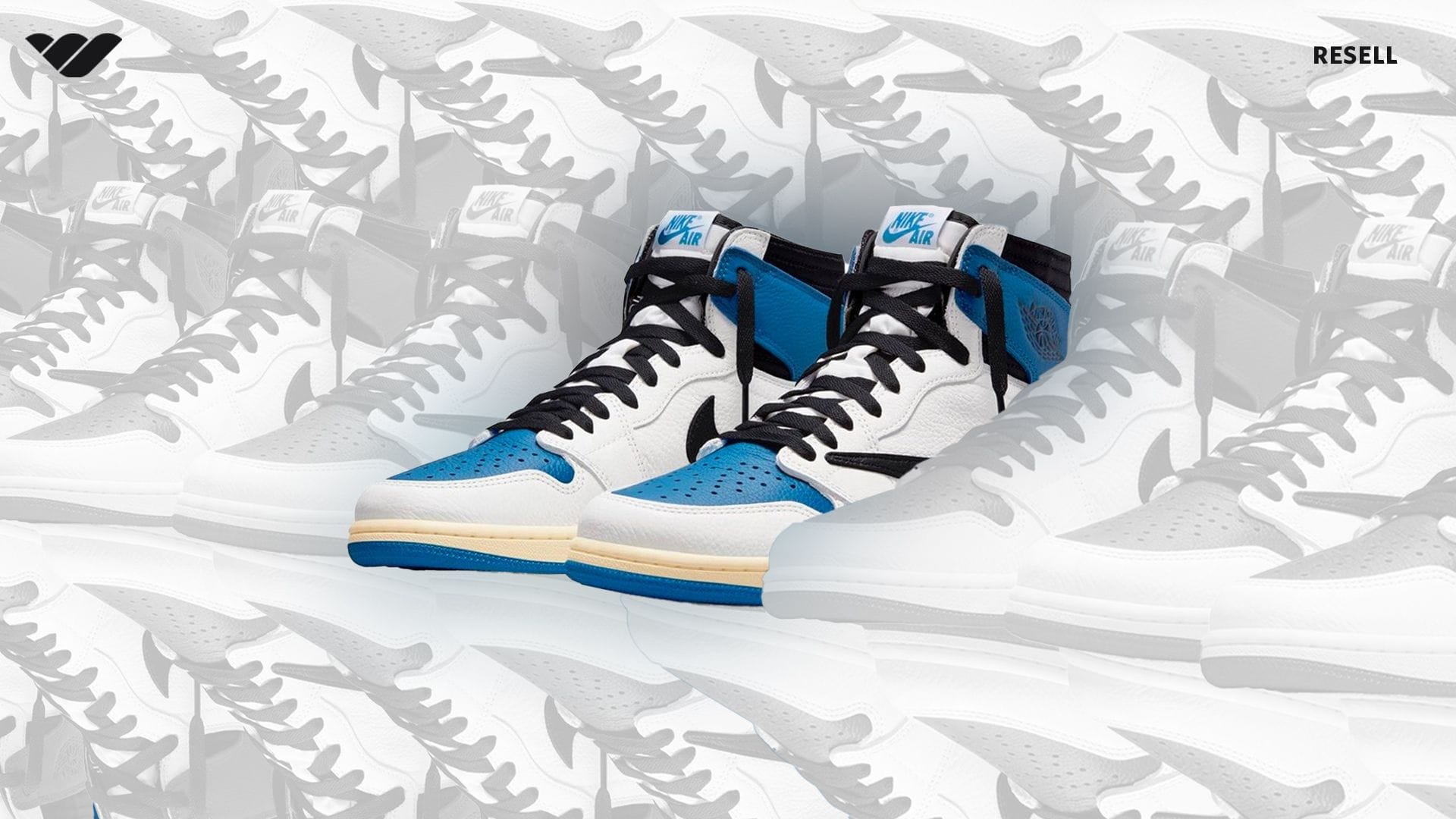
Now that you’ve established your initial budget, you can start to lay the foundation of your sneaker reselling business. While your budget will determine the very first opportunities you can capture, no matter what amount of money you start with, you can rise to higher levels by reinvesting and securing consistent profits while carrying out best practices with a goal in mind.
Here’s the step-by-step process that you’ll follow to start your very own shoe reselling business:
1. Assess the market
The first step to starting as a serious sneaker reseller is to lay a good foundation by thoroughly assessing the market. This involves comprehensive research and staying up-to-date with current trends, seasonality, popular models and the overall market demand for sneakers at any moment. Here’s how to do it the right way:
Gather news and stay informed
Being on the pulse of the latest sneaker info is crucial to your success. Follow pop culture sites like Hypebeast and Complex, as well as sneaker blogs, sneaker apps, and dedicated social media accounts for news surrounding the latest drops. You can also join online communities, including private cook groups that can give you an edge with exclusive information. Be sure to regularly visit these resources and stay subscribed so you are always updated with the latest news.
Review the latest drops
To get an understanding of specific opportunities as you enter the sneaker market, compile a list of the latest sneaker drops, both those that have recently passed and those that are upcoming. The pricing and sales activity of these shoes will give you an idea of how the sneaker market is at any moment.
Analyze marketplaces
Knowing aftermarket prices for the specific models that you’re interested in is a core skill you’ll need to pick up. In order to get an idea of how much shoes are going for on the aftermarket, analyze marketplaces, including broader platforms like eBay and Facebook Marketplace, in addition to sneaker-specific apps like GOAT and StockX.
2. Source your sneakers
Finding the right sources for your sneakers is a crucial ingredient to the recipe of all successful resellers. Here are the best methods for sourcing sneakers:
Retail drops
Many of the best opportunities come from one-time drops that happen at specific times in certain stores. Make note of the exact release time and create a store account before going for a drop at the exact time of the release for the best chances. Some releases happen as raffles, so make sure to sign up on time for your chance at getting a hot pair of shoes at retail price.
Sneaker conventions and pop-ups
In between drops, there is always action to be found at sneaker conventions and other pop-up events. Not only are these a great place to find shoes, but they also present the opportunity to network with other buyers and sellers.
Sneaker bots
The vast majority of professional resellers use software known as a sneaker bot to assist in purchasing shoes. The reason these bots work so well is that they significantly expedite the checkout process, automating some or all of it while also having the capability to run multiple instances. Setting up a bot can be complicated, and other steps go into the process, including using a virtual server and proxies and creating multiple profiles that are all equipped with different payment methods. Most sneaker resellers prefer using group buys within a top-rated sneaker cook group so they can skip the complex set-up.
Recommended next read: Is sneaker botting still worth it In 2025?
Sneaker apps and VIP programs
There are several apps you can use that can give you an edge as a sneaker reselling, including the following:
Nike SNKRS app: Nike’s official app is essential for securing latest drops from the brand, including limited releases and restocks. Most releases happen as a raffle. Restocks happen on a first-come, first serve basis, and you will often receive a push notification when these take place.
Adidas Confirmed app: Similar to Nike’s SNKRS, Adidas’ Confirmed app offers exclusive access to limited releases with the creation of a free account. The app also offers membership to its Creators Club, which allows you to earn points from purchases in addition to other discounts and exclusive perks like getting early access to new drops.
VIP Programs: eg, Foot Locker VIP (FLX): Many sneaker stores have their own VIP programs that you can use to gain points and priority for exclusive releases. One such program is Foot Locker’s FLX, which uses a point-based ranking system to allow those with more points higher chances of securing limited-edition sneakers. Points are earned from past purchase history, and many of these programs offer discounts or coupons for members. Finish Line’s Winner’s Circle is another example, offering a $20 certificate for every 200 points earned.
Recommended next read: Best sneaker apps to use in 2025
3. Prepare your sneakers for reselling
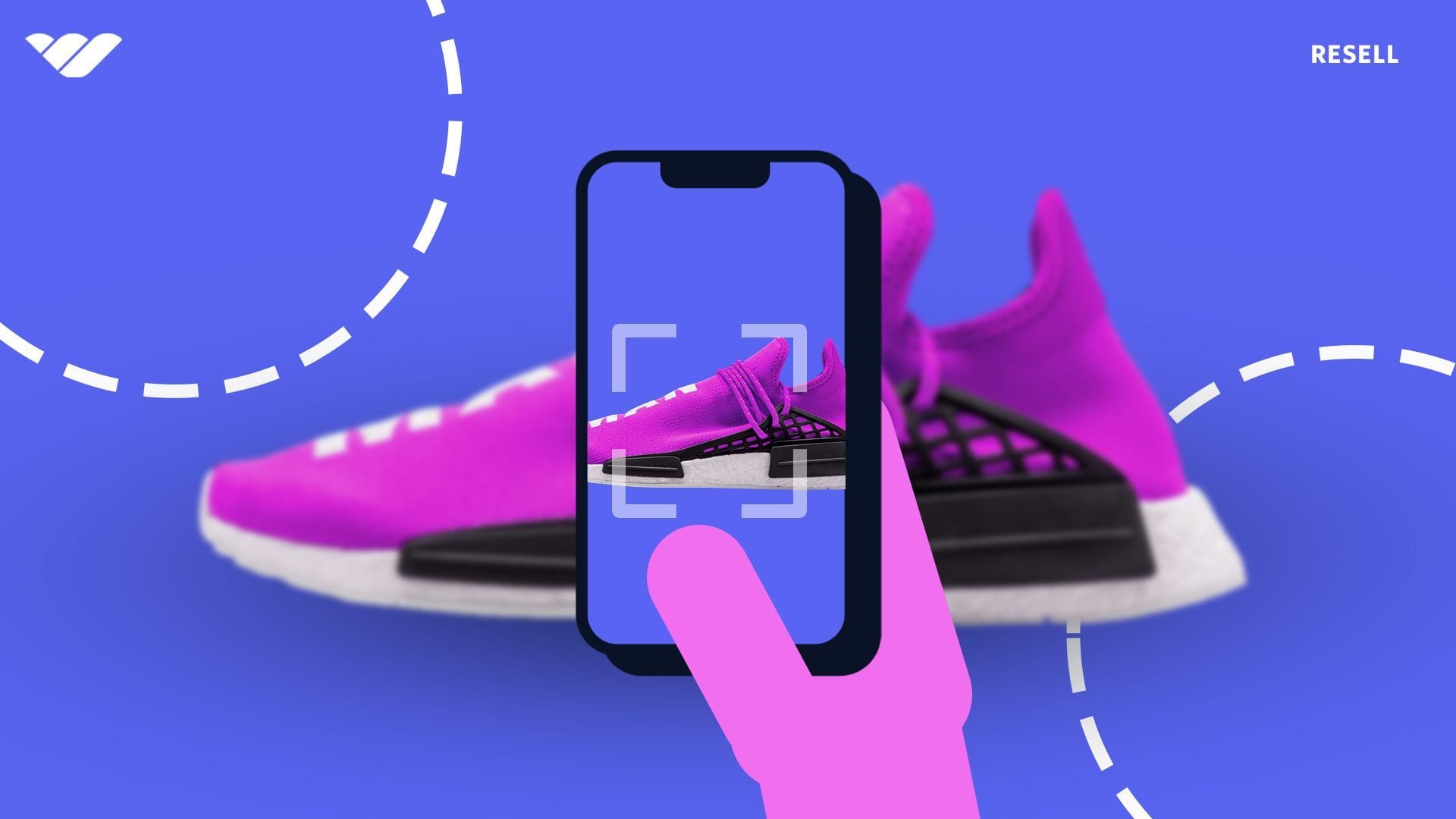
Once you’ve sourced your shoes, you need to get them ready to be sold so they can fetch the highest dollar amount. Here are some pro tips for prepping your kicks:
High-quality, tagged pictures
Most buyers are visual, especially when it comes to shoes. Take high-quality pictures that are tagged–that is, featuring your brand or store name–so you can use them when making listings on platforms like eBay or marketing on social media.
Cleaning and restoration
If you’re dealing with used shoes, it’s essential to familiarize yourself with cleaning and restoring. Take the time to get your shoes looking as good as possible, using professional cleaning products and replacing laces or insoles if necessary.
Verify authenticity
One of the most important precautions you must take as a shoe reseller is to make sure you’re dealing with authentic sneakers. Buy only from authorized retailers, and if buying from third parties, be sure to get a receipt or other proof of purchase. It's also important to review the latest pictures and videos of telltale traits of the specific model you’re selling.
4. List and market your shoes online
Now that your shoes are prepped, it’s time to list them online. You need to complete the previous steps as quickly as possible, as sneaker reselling is all about timing. This is especially true with hyped new drops, where mere days can mean the difference between selling for a healthy profit and breaking even. Be sure to sign up for all major platforms, and list on a variety of them in the beginning as you establish a reputation on each.
Since sneaker reselling can be competitive, building and maintaining a loyal audience with direct marketing efforts, in addition to listing them on every online platform you can will help you to build a sustainable business. Consider using a memorable brand name and create engaging content that goes beyond displaying inventory.
Recommended next read: Best apps for reselling anything online
5. Ship your inventory
Once you make a sale, you need to ship your shoes out like a pro. Doing so will make a lasting impression on your buyer. Here’s how:
Pack professionally
The way your shoes arrive will make a lasting impression on your buyer. A poorly packaged pair of shoes that are haphazardly thrown in a box signals to the buyer that the seller doesn’t care about them, which can lead to a bad review or even a return. Take time and care with packing your shoes neatly, no matter what condition they’re in. Make sure to double-check check you’re shipping them as described, which might mean including an original box, laces, hang tags or other accessories as advertised.
Ship promptly
If your buyer paid a premium on the shoe because they missed the drop, that means they want the pair of shoes ASAP. Ship using the fastest economical method, for example, USPS Priority mail. Paying more to ship shoes quickly will be well worth the price compared to waiting to ship longer and having a dissatisfied customer.
Communicate along the way
When it comes to shipping shoes, it’s better to overcommunicate than to assume the buyer is receiving updates from the platform they bought on. Send a personal method when you ship your shoes, letting the buyer know when to expect them, and that they can reach out with any questions. This type of personal, concierge-like service is particularly important if you’re dealing with expensive shoes, which attract more discerning customers who might choose you as their exclusive supplier if you make a good impression on them.
Add tracking and insurance
Be sure to add a tracking number and save it to ensure that your shoes are shipped. Additionally, insure your package for the dollar amount that the pair of shoes has been sold at so that you can protect yourself in the case that the shoes are stolen or if the customer accuses someone of theft or claims that the shoes went missing. It’s better to protect yourself rather than pay the price of losing a claim and paying out what could have been potential profit.
Take advantage of discounts
Every shipping service will have discounts for loyal or bulk customers, so be sure to sign up for an account with a shipping company, asking them about any volume discounts and any other similar perks. Some apps also partner with certain carriers to offer their shipping labels at a discount, so be sure to go with those when starting out shipping one shoe at a time so you can maximize your margins and not pay more for shipping than you need to.
Recommended next read: What is ecommerce fulfillment?
6. Create a repeatable process
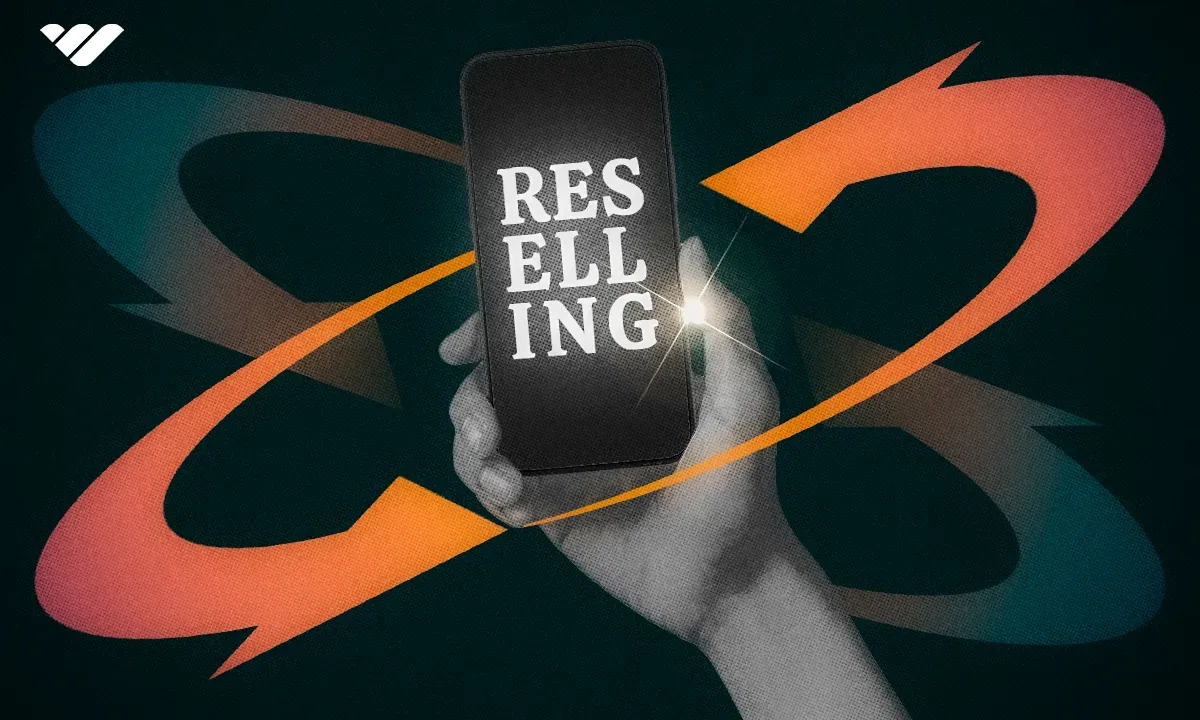
Scaling your sneaker business starts by creating a process that you can rinse and repeat so that your revenue and profits healthily rise. Here are some best practices that pro resellers use:
Hone your sourcing strategy
In the beginning, your sourcing might be more along the lines of spray and pray, that is, probably highly inefficient and requiring a lot of effort. While it’s different for everyone, once you find out what’s working for you, cut out methods that are high effort and low return for those that provide the opposite returns on your energy investments. An example would be doubling down on a consistent source such as a local factory outlet or a sneaker bot that is yielding a high success rate.
Consolidate your news resources
Keeping up with the latest shoe news can prove to be overwhelming, so while you don’t want to miss out on valuable opportunities, you also don’t want to drown in too much noise. Consider cutting out news resources that are redundant or too cluttered, or better yet, invest in joining a cook group that includes a curated news channel as well as high-speed, current monitors that push profitable opportunities all in one place.
Streamline your operations
Create a spreadsheet to upload all inventory and make note of how much you paid, the source of purchase, the purchase date and the date of the sale. While it may seem tedious to start when you’re only dealing with one shoe at a time, this will establish a good habit that will save you a headache as you scale and give the added bonus of making tax times easy. As you increase in sales volume, consider using advanced ecommerce fulfillment methods, including utilizing third-party logistics (3PL) and warehousing so that you can more easily manage large amounts of inventory.
Specialize
As with any category of reselling, the riches are in the niches. Find what works for you and focus on that, making sure that the branding of your store is aligned with this expertise of yours. Whether it’s securing the hottest releases or scoring rare vintage shoes, find a speciality to claim so you can attract and retain a loyal customer base–this is critical to your success if you want to stand out from the sea of resellers, most of whom fail to nail this aspect.
What are the most popular sneakers to resell?
While the exact list of shoes to resell is constantly changing based on trends and fluctuating interests and demand, a few sneakers have proven to be evergreen in the past several years during all market conditions.
Here are five such models:
Travis Scott Jordans
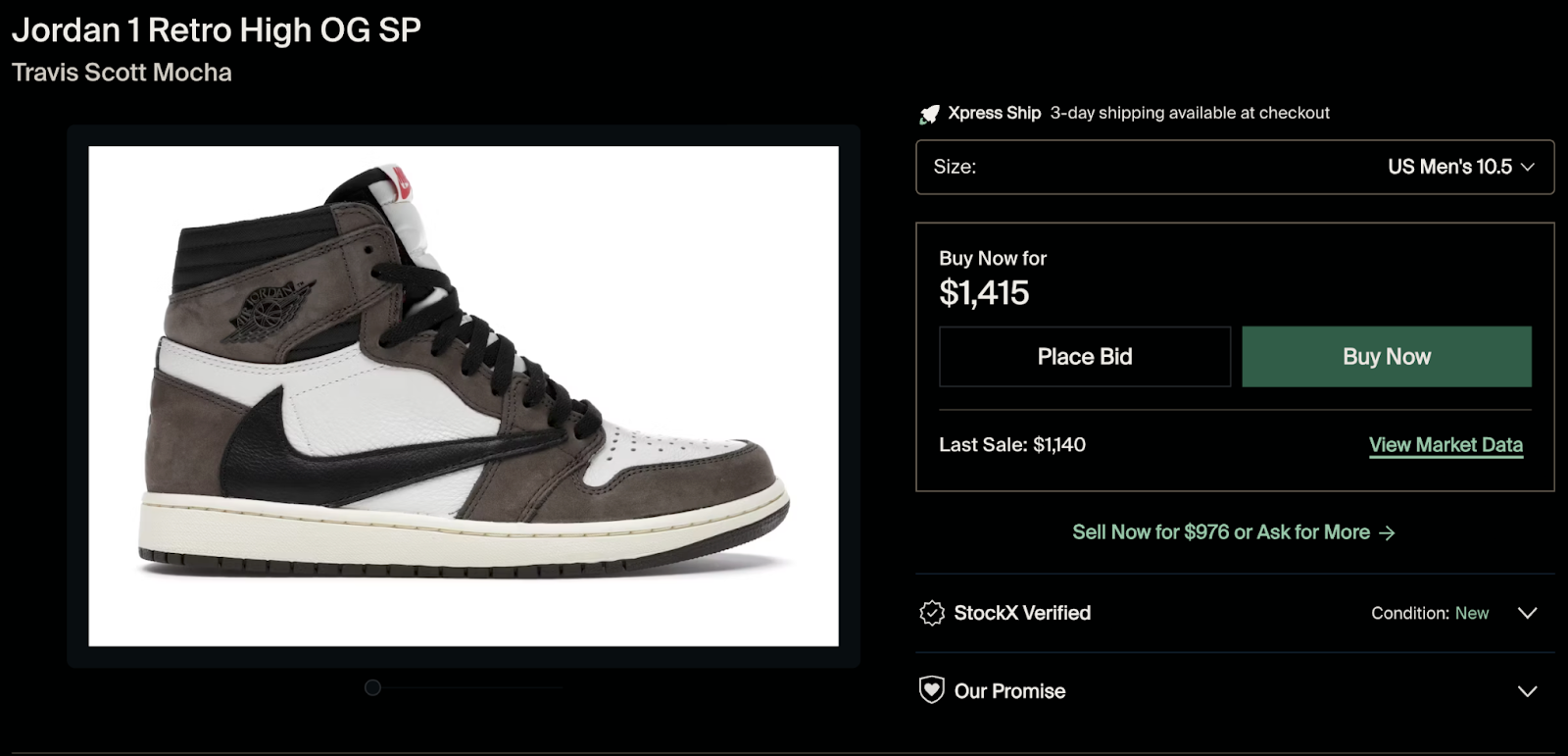
In general, celebrity collaborations with brands like Nike and Adidas are good models to target, as they have produced some of the most desirable past models. Yeezys are an example of a collab that isn’t as hot as it once was, but one collab that has continued to churn out hits has been Nike x Travis Scott, particularly with Air Jordans.
One of the most profitable examples of this shoe is the Travis Scott x Jordan 1 Retro High “Mocha”, which retailed at $175 and years later still sells for over $1000 in any size.
Nike Off-White
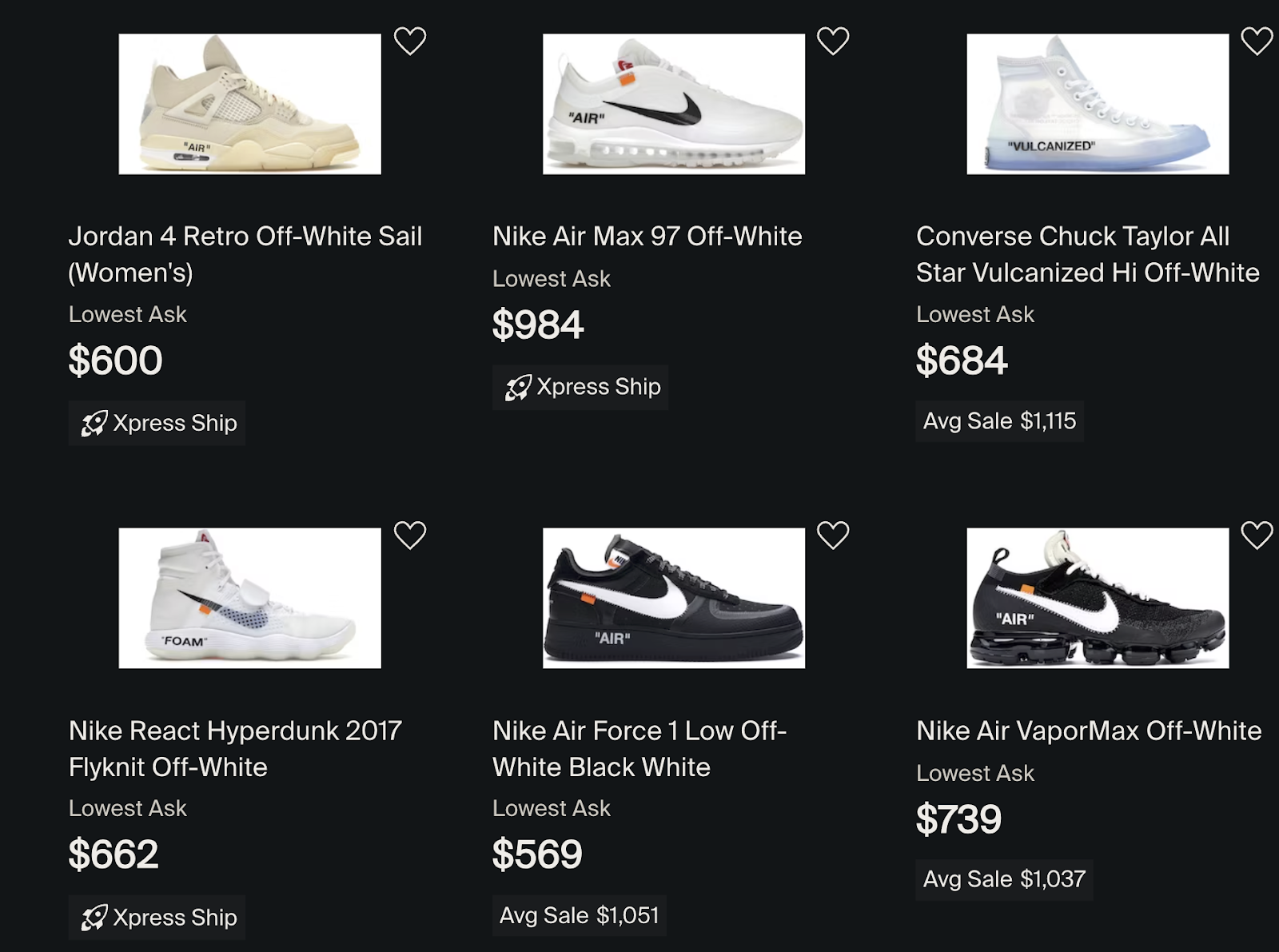
Late designer Virgil Abloh took the streetwear world by storm when he dropped his brand Off-White, which was known for its distinct combination of text and an industrial feel that included patchwork and distressed details. The brand dropped its first collaboration with Nike in 2017, releasing 10 shoe models at once in a collection known as “The Ten”. These shoes still have consistent demand, and while newer models don’t fetch the insane returns they once did, they’re a great model to target if you get them for a good price as they usually sell quickly.
The Off-White Air Force 1, which retailed for $170 and came out in multiple colors, still fetches between $500-$1000 depending on its color, the most desirable being black, white and neon.
Nike SBs
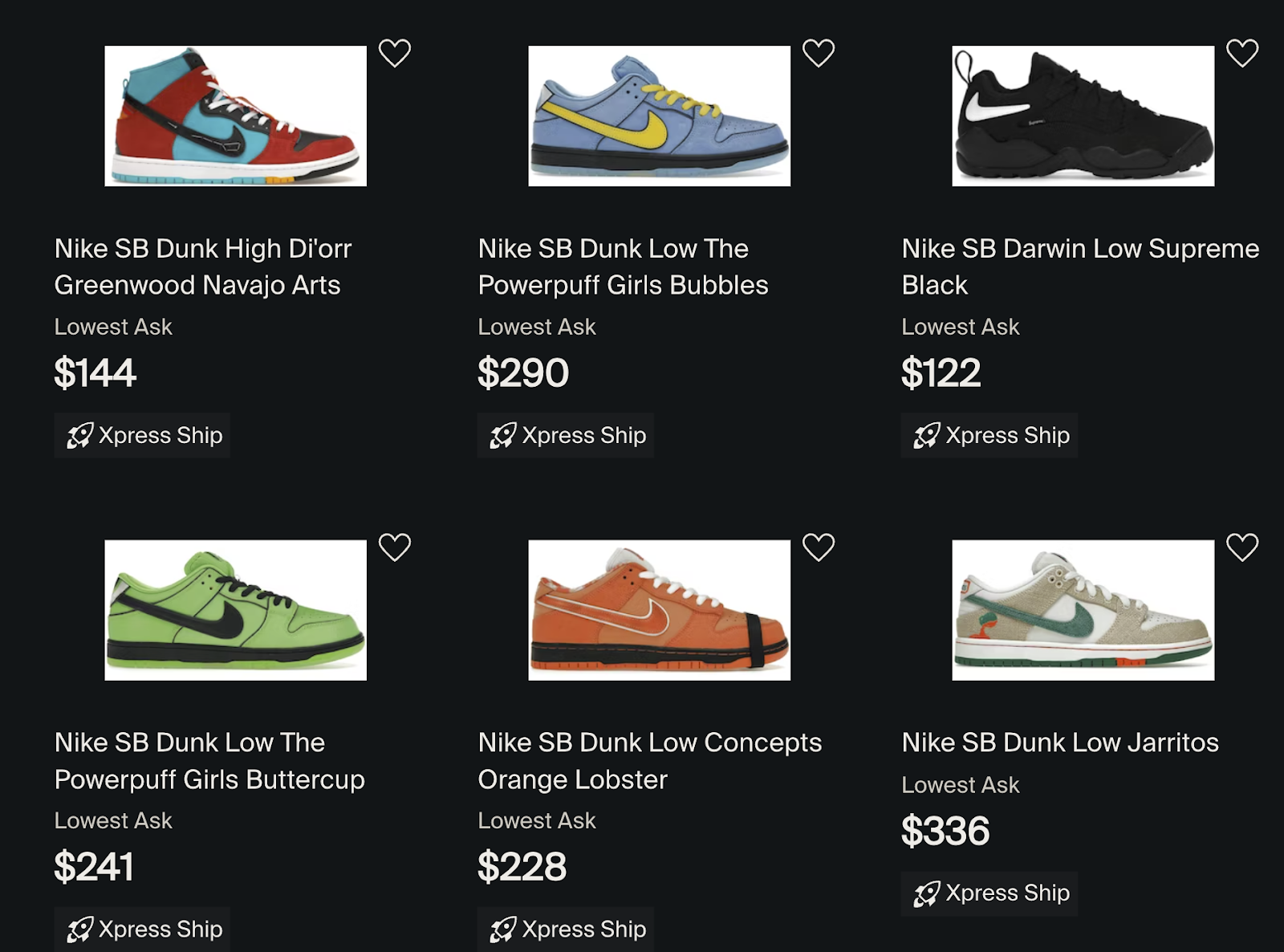
Nike SBs have emerged as a reseller favorite thanks to high-profit margins on top of a retail price that averages around $100, which is about half the price of most other resellable Nike sneakers. Since there are so many different SB models, all with varying price and demand, it’s best to go on a website like StockX to assess the pricing and demand of a specific model that you are interested in purchasing.
A model that stands out for both sneakerheads and resellers is the Ben & Jerry’s Chunky Dunky model, which retailed at $100 in 2020 and still goes for up to $2000 per pair depending on size.
Nike Air Jordan Retro 1
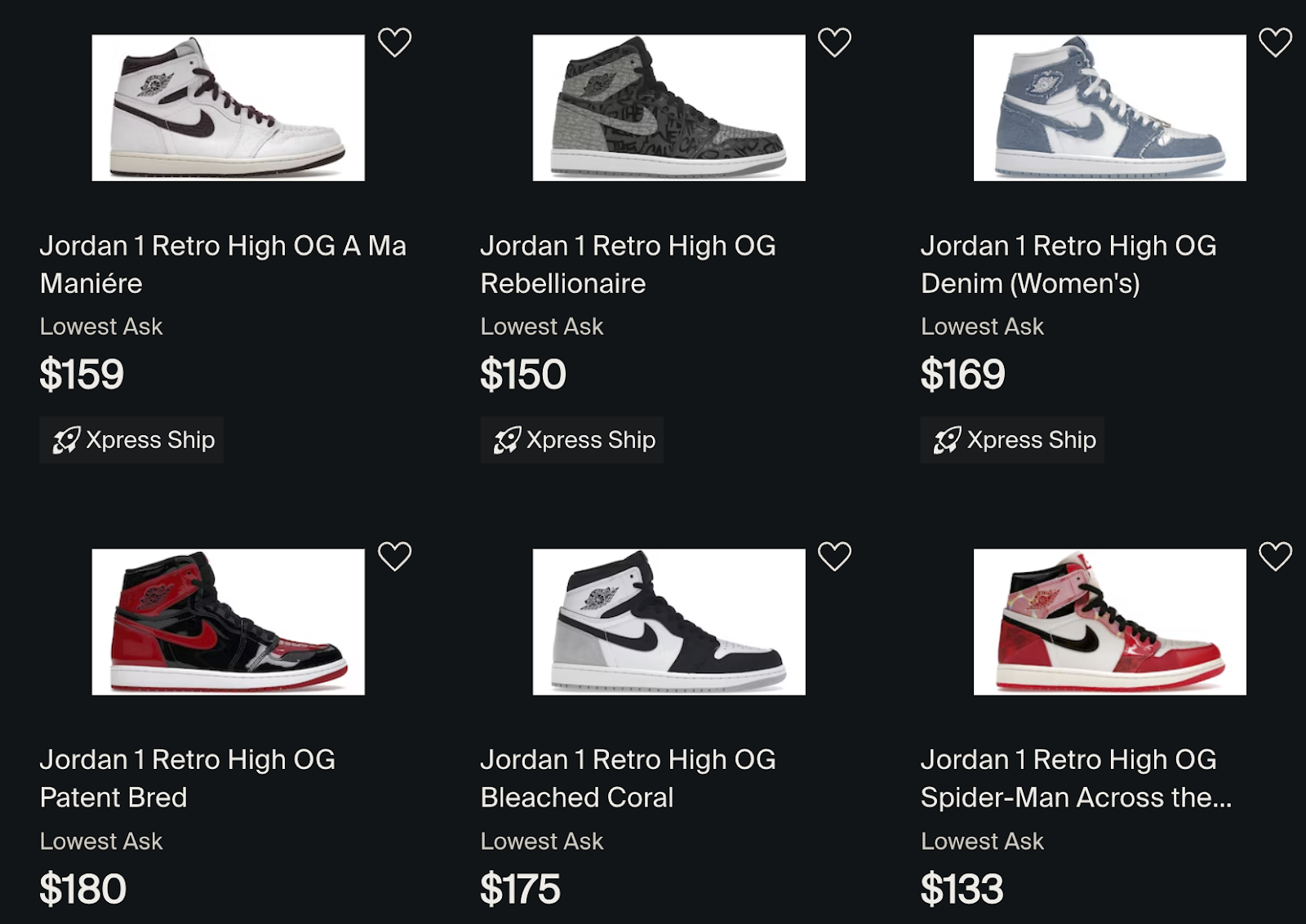
Nike Retro Jordans are some of the best shoes to resell in general, but the model that rises to the top is the first one made, the Air Jordan 1.
Some may say that in recent years the brand has been releasing these in far too many colors, so many of the more recent models lose value after their release date. In order to pick a model that will increase in value, pay attention to the hype, stock levels, and if it’s an occasional re-release of a past historical model.
A notable example of a Jordan 1 is the original Chicago, which can go for thousands of dollars in its original 1985 and 1994 variations. In general, high-top Air Jordan 1’s are worth more than the mid or low as they are the original silhouette.
Nike Air Jordan Retro 11
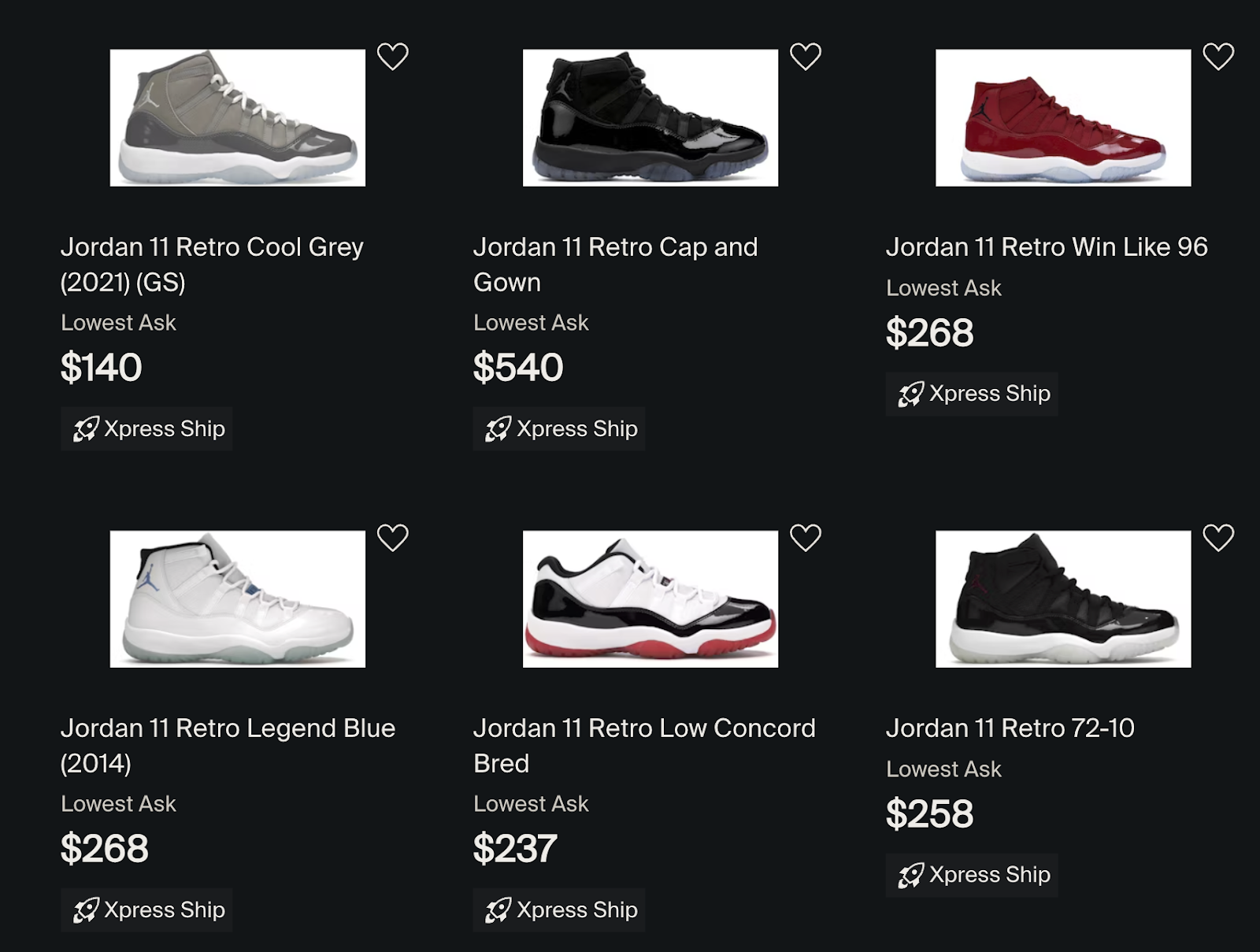
The Air Jordan Retro line came out in over a dozen variations since the Air Jordan 1, and a model that has solidified its popularity amongst sneakerheads is the Air Jordan 11. It’s known for its perennial holiday season drops that almost always generate excessive demand and solid resale value.
The iconic Space Jam colorway is a specific model to look out for. Its 2016 release retailed at $220 and still goes for close to $400 today.
As with the Retro 1’s, the high tops are more valuable.
Recommended next read: Hottest sneakers to resell in 2025
How can I find sneakers to resell?
We've now covered the basics of how you start reselling sneakers and what the hottest sneakers to resell are, but you probably still have more specific questions. Let's first look at how you can find sneakers to resell.
A huge amount of people are trying to find sneakers to resell, so if you want to stand out and create a lasting business, you need to do this the right way. This means using a different strategy depending on which type of shoes you’re going for.
Here are the two main categories of shoes you’ll be selling and their respective best strategies.
Finding used shoes and past releases to resell
The most consistent opportunity in the shoe aftermarket is with past releases. These shoes will either be used or deadstock–unworn in sneakerhead lingo.
Here are the best methods for finding shoes in this category:
Thrift stores
While this method takes the most time, luck and work, thrift stores can yield the highest potential returns. These shoes will likely be in more heavily used condition, so your best bet is to clean the shoes before selling them so they are more attractive and presentable. Consider replacing the laces or insoles while keeping the rest of the shoe original, but be sure to pick colors and styles that match that of the original shoe. Additionally, touching up some discoloration is a good idea. If done professionally, this can vastly increase the price of a used shoe.
eBay
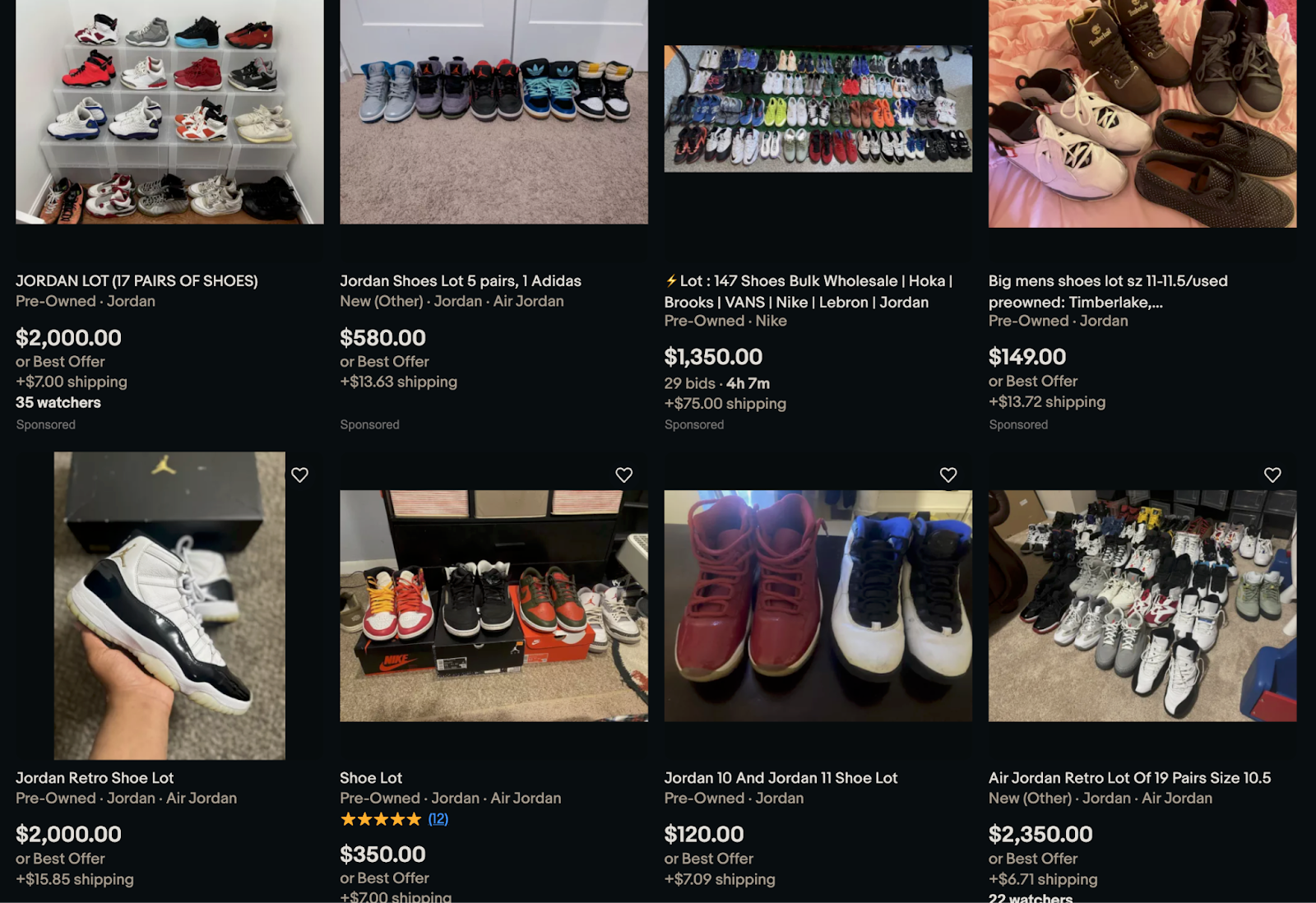
The original aftermarket for shoes was eBay, which has been around long before the popular sneaker apps and resale platforms were born. Today, it’s still ripe with opportunities to source shoes, particularly used sneakers. One strategy that resellers use to get inventory for a good price is searching for “lots” on eBay.
By helping sellers to liquidate many shoes at once, it’s guaranteed that you’ll be getting a better deal on each pair compared to if you were to purchase them individually. With lots, don’t be afraid to negotiate as well as these typically don’t see much action compared to new and trending releases, and some buyers may be desperate to cash out.
Clearance aisles and outlet stores
Another consistent method for finding past-released shoe models is discovering them in clearance sections or outlet stores. While it’s possible to use this method online, it often yields the best results in person and also allows you to make listings quickly and save on shipping costs. Take advantage of final clearance sales and in-store coupons, and make sure to double-check that a pair of shoes will give you a high enough return with sufficient demand so you can justify your purchase.
Local marketplaces
Local marketplaces, including Facebook Marketplace, Offerup and Craigslist, are great places to find shoe deals. Not only will you save on shipping and platform fees, most sellers here are also open to negotiating. You’ll also have the added bonus of networking–each seller can become a go-to source for shoes. Simply ask them if they are always buying shoes or if they have any other kicks for sale. This can open up the door for a consistent source of off-market deals, which can be invaluable to your success as a shoe reseller.
Sneaker resale platforms
While most sneaker resale platforms are best used for selling shoes, the free market sometimes presents an opportunity for retail arbitrage when prices between platforms for a specific model vary enough for you to make a profit margin. Make sure to sign up for an account and subscribe to emails from these sources as they sometimes give coupon codes or promos that you can use to get your shoes at a profitable pricepoint.
Nike shoe sourcing pro tip:
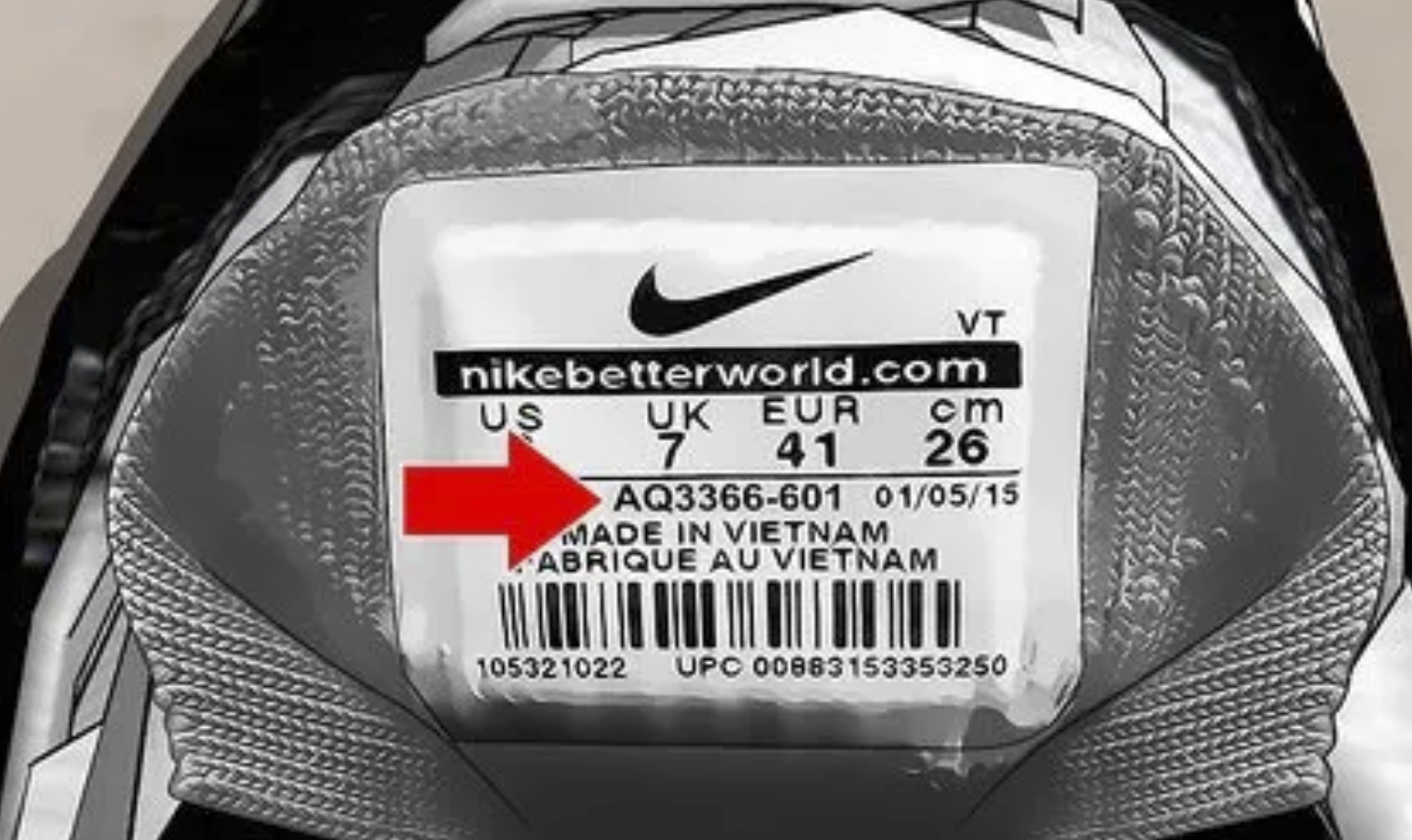
If you’re looking at a pair of Nikes at a thrift store, clearance rack or outlet store and you’re not sure of the model or its worth, look on the inside of the shoe for the UPC code. The tag will either be on the inner tongue or on the side of the interior of the shoe. Simply Google that code and you’ll find the shoe model and how much it’s being sold for. Pasting the code directly into eBay will often yield results as well, but it’s best to Google first so you know the shoe model’s name that you can use to search on platforms.
Securing new sneaker drops
Getting new drops that are hyped enough to generate resale value puts you in line with some of the most intense competition in sneaker reselling. While it’s possible to score by getting a trending new model at retail price, don’t be surprised if you strike out. Here are the best ways to find new sneaker drops:
Be informed and get in line
Sign up for the email list of any store that is stocking a pair of shoes that you have determined to be a profitable opportunity, and be sure to figure out how to get your hands on a pair. As a normal buyer, you’ll have to resort to a manual method, which could mean entering a raffle or waiting in line either physically or online when the shoes debut. This method relies largely on chance, and you’ll need both persistence and luck to win, but if you score a highly profitable drop, you could be in for a nice payday.
Bulk and backdoor deals
High-level sneaker resellers have sources for shoes that allow them to circumvent the hordes of people vying for their shot at getting a single pair by gaining access to bulk or backdoor deals. These deals are often set up far in advance through a relationship that has been fostered from a successful history of deals. While you won’t be able to access these as a total beginner, if you build up your bankroll and ask around, you’ll have a shot at squeezing yourself into this tight network of underground shoe distribution if a spot opens up and you’re ready.
Use monitors
Some of the fairest shoe reselling opportunities come in the form of restocks and shock drops. With these, rather than announcing a shoe drop far in advance, a retailer will suddenly announce the availability of a hot shoe model. Because it comes by surprise, fewer people will be around to buy the stock, so it will sit around long enough for more people to buy them. Sneaker monitors constantly monitor and scrape websites for stock levels and new URLs, and the best ones can recognize any of these types of releases and push you a notification in real-time.
Setting up a sneaker monitor can be both expensive and complex, so it’s best to join a dedicated sneaker reselling group that is already equipped with them so you can gain instant access to a foolproof setup that includes a community on top of high-quality, custom monitors.
Where can I resell my sneakers?
So you've sourced your shoes, but where do you resell them? While the demand for shoes is strong overall, knowing the top marketplaces for sneakers and the differences between them is key to building a solid shoe reselling business.
Here are the best places to resell your shoes:
eBay
Although it might still be known as a good place to resell any item, eBay is now taking action to regain its former throne as the top place to buy and sell sneakers online, so it’s offering many promos for both sellers and buyers, including coupons and reduced or eliminated selling fees. This means that you can benefit from significantly higher margins compared to other platforms, which charge a standard 10% fee–taking advantage of an eBay promo that eliminates this fee will save you $10 per $100 in price, which adds up as the shoes get more expensive.
GOAT
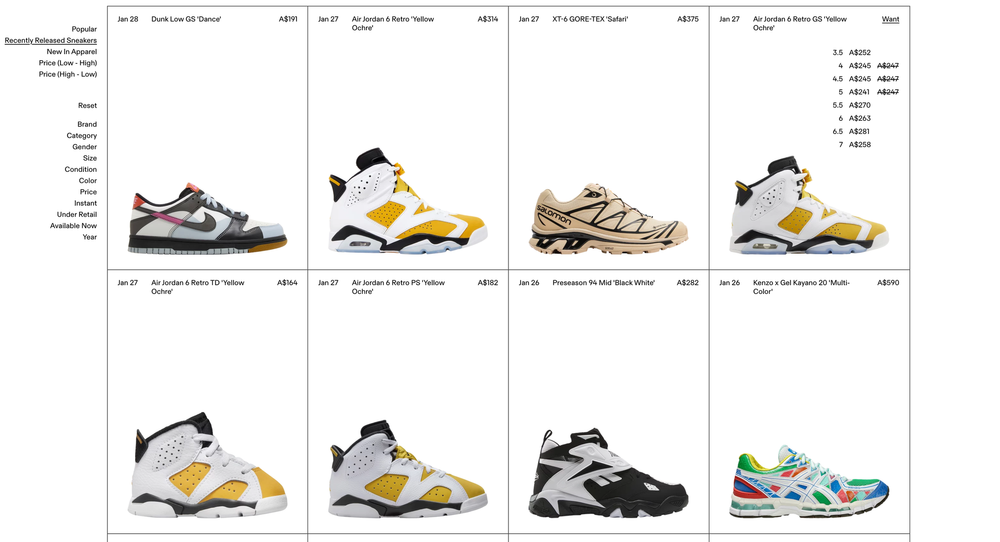
One of the apps that have popped up in recent years and gained a top spot as a favorite for both sneaker buyers and resellers is GOAT. The company solidified their market dominance in 2018 when it acquired shoe reselling giant Fight Club.
Sellers on GOAT are ranked by points that determine seller reputation. A higher ranking means reduced fees and greater visibility in the marketplace. Before a listing is approved, sellers must upload pictures that verify both the physical ownership and the authenticity of the shoes.
GOAT is easily used as a mobile app as well, which makes listing and managing inventory incredibly convenient.
StockX
Another top sneaker marketplace is StockX, also known as the stock market for sneakers. It’s best known for its price data, which gives a rich and accurate pricing history that you should take full advantage of as a reseller.
However, when it comes to selling shoes, StockX isn’t necessarily the best option. The platform has a reputation for having fakes slip through despite its verification process. This has reduced its demand on both the buying and selling side.
You don’t need to write this option off completely as you can use it as a second place to sell shoes, particularly if the platform allows you to fetch higher prices. If you do end up selling on StockX, it’s possible to benefit from the regular promotions in reduced or eliminated seller fees. The company also offers discounted fees for bulk sellers past a certain level.
Facebook Marketplace
When it comes to reselling shoes in person, it’s hard to beat Facebook Marketplace. Since becoming a default, in-your-face shopping option for every single user of the app, activity has continued to rise in all areas, including shoe reselling.
Facebook Marketplace will save you on fees when dealing in person, and you’ll also have the option to list items that are available for local shipping. You’ll get the best use if you live in or close to a major city, so before using, assess demand and pricing by searching for a trending shoe model and seeing how many listings there are and how they are priced. Run these numbers against your other options to determine if Facebook Marketplace is somewhere you should sell shoes in your local area.
How do I know which sneakers are profitable?
One of the most essential skills in sneaker reselling is knowing how profitable an individual shoe model might be.
Some new resellers end up buying a “brick” – that is, a shoe model that not only moves slowly on the aftermarket, but also often sells below the retail price which normally results in a negative return on investment for the buyer.
So, before you buy a shoe to flip, you need to research how much money you can make from it.
The best way to do this is by finding real-time and historical pricing data. You can find this information on platforms like StockX.
Here’s an example of how to use StockX to determine the profitability of the Jordan 3 Retro x J Balvin “Medellin Sunset”, which retailed for $285 in September 2023:
As you can see, the aftermarket price was highest in the days surrounding its release date, peaking just before the release and then dropping off significantly in the days and weeks following the first week of the release.
After the initial volatility settled, you can see the overall profitability of the model by looking at the price premium, which in the case of this shoe, is 85%, or over $150 compared to the initial retail price.
Predicting the resale price of upcoming releases can be harder, but you can search for the model in the weeks and days before its release on apps like StockX and GOAT, and if you see listings that are significantly higher than the retail price, you can be sure that if you get the shoe for retail, you’ll be able to flip it for profit.
How do I price sneakers for resale?
To understand how to price a shoe for resale, you need to know the best methods for price research on top of what we just mentioned in the previous section.
If you are trading a past-released model that you’re sourcing from somewhere like a thrift store or outlet, eBay is perhaps the best place to figure out how exactly to price it.
When using eBay to research the price and demand of a used or past-release pair of shoes, go to the filter section and make sure to show only Completed and Sold items to gather real-time data that will let you know how to price and sell your shoes.
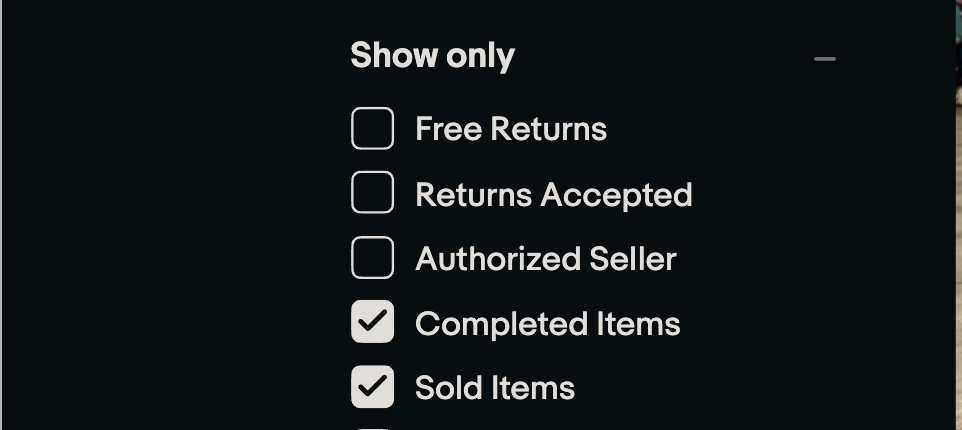
Here’s an example for a currently trending pair of Jordan 11s that retailed at $230 for men’s sizes:
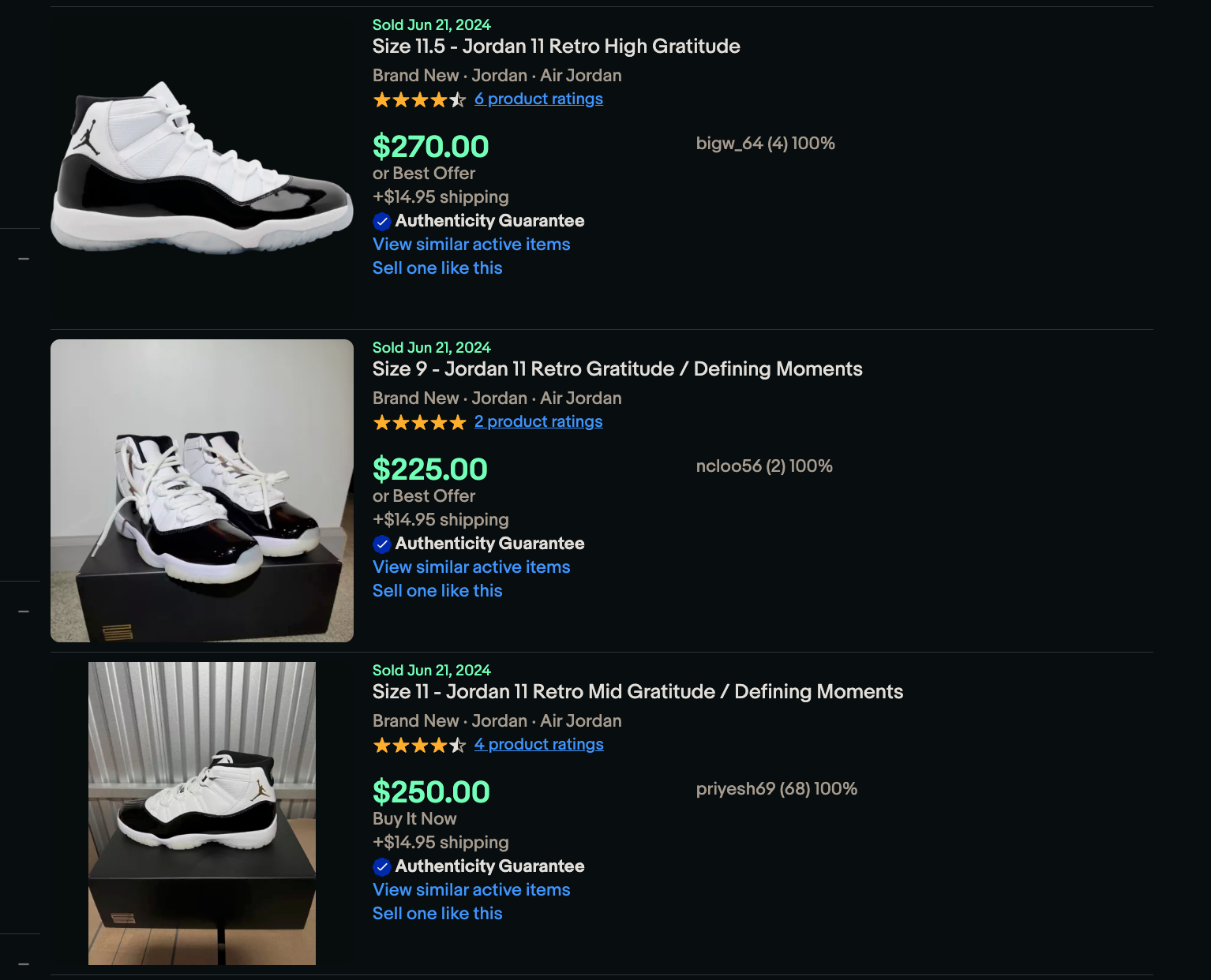
This method works well for shoes in all conditions, including used, and will give you a more accurate idea of the demand for a shoe model if you have a hard time finding it on StockX, GOAT or other popular reselling apps.
Ready to start a sneaker reselling business? Get expert advice with Whop
Armed with this guide, you’ll be able to approach the competitive world of sneaker reselling with an informational edge. If you’re planning to start a sneaker reselling business soon, be sure to bookmark this to use for future reference.
If you want to benefit from both mentorship and a like-minded community that will help you in the sneaker reselling world, you should check out one of the many high-quality private groups right here on Whop. We’ve got a number of reselling communities that cover everything from retail arbitrage on eBay and Amazon to learning how to dropship. With a diverse collection of sneaker niches and exact strategies to succeed, finding a group that is best for you on Whop will be easy.
As a member of one of these private communities, you’ll reap the following benefits:
- Expert guidance
Each group on Whop was created by someone who has extensive experience in their respective field. Depending on the group you join, you could have the chance to gain regular and direct access to their advice, and even if they’re not around all the time, you’ll able to be guided and have questions answered by a member of the group’s staff. Having this kind of expert guidance makes your success foolproof, and many of these groups are incredibly beginner-friendly. - Insider knowledge and connections
One of the hardest parts about succeeding at any level in shoe reselling is having the right connections and insider knowledge. Since these groups are limited in capacity, they’re able to drop valuable advice and resources inside of a winner’s circle that is far away from the public masses. Getting inside one of these exclusive communities will allow you to network with an inside crew that will level up your game even if you already have some experience. - Access to exclusive tools and software
Success in sneaker reselling in the modern age requires an edge that comes in the form of software, whether it’s with sneaker bots, monitors, or ideally a combination of both. However, setting these up the right way can be tricky for those who aren’t fond of technical nuances. These tools are often expensive to buy and maintain as well. Thankfully, just about every private group on Whop is fully stacked with valuable tools including monitors and sneaker bots that you’ll get access to as a member.
Ready to get started? Head over to see all the current sneaker reselling groups and work out which one is best for you based on your needs and experience. Start reselling today.
Sneaker Reselling FAQs
Can you make a living off reselling shoes?
It’s possible to make a living reselling shoes, however, this isn’t without a calculated process in addition to an edge that is often informational, financial, and in the form of connections. Starting shoe reselling as a side hustle is a more realistic first goal, and this will also give you the knowledge and initial momentum to scale your business to full-time levels. As you build a reputation and continue to hone your exact strategy, which might include leveraging groups and tools like monitors and sneaker bots, you can find yourself growing to the point of making a healthy living from flipping shoes.
Is it illegal to resell fake sneakers?
One of the most important precautions to take as a shoe reseller is to avoid dealing with fake sneakers. Not only is this illegal, it will ruin your reputation as a seller and can cause an irreversible chargeback, along with severe legal consequences. Before buying a pair of shoes, do as much due diligence as you can to determine their authenticity. Today, just about every shoe reselling platform has a department dedicated to keeping counterfeit goods off their platform.
How do you know if a sneaker is worth reselling?
Determining if a sneaker is worth reselling involves price research and analysis. Start by looking up the specific model that you’re thinking of buying on various platforms, and analyze what the average sales price is. Calculate how much you would make selling the pair of shoes, taking into account shipping, platform fees, and other associated costs. If you’re left with a healthy margin, the shoe is worth buying. You can also know if a sneaker is worth reselling once you gain enough experience to recognize the demand, hype and historical data that suggests that a specific pair is going to be a winner.
Is Nike banning reselling?
In 2022, Nike made an announcement that discouraged resellers from buying shoes, stating that orders could be canceled and accounts could be banned should their purchases be suspected to have been made specifically for reselling. This came in the form of flagging orders that were suspected to be made by sneaker bots in addition to taking more action towards ensuring that buyers only got one pair of shoes. Despite all this, Nike did not ban reselling, as reselling anything is still the legal right of any rightful owner of an authentic product. Additionally, this ruling had no effect on those selling used Nike shoes and only affected those trying to buy new release Nikes.
Recommended next read: Will Nike's new rules to block resellers make a difference?
Which sneakers have resell value?
One of the differentiating factors between a casual shoe reseller making a side hustle and a professional making a full-time living is having the skill of identifying which sneakers have resell value. Several factors contribute to whether or not a shoe will resell, but generally speaking, if the hype far exceeds the demand for a certain drop, that shoe will have to resell value. Specific traits to look out for that most of these valuable sneakers share are their low stock level and limited availability, their historical significance, if they’re a unique celebrity collaboration, and if they’re currently trending.



